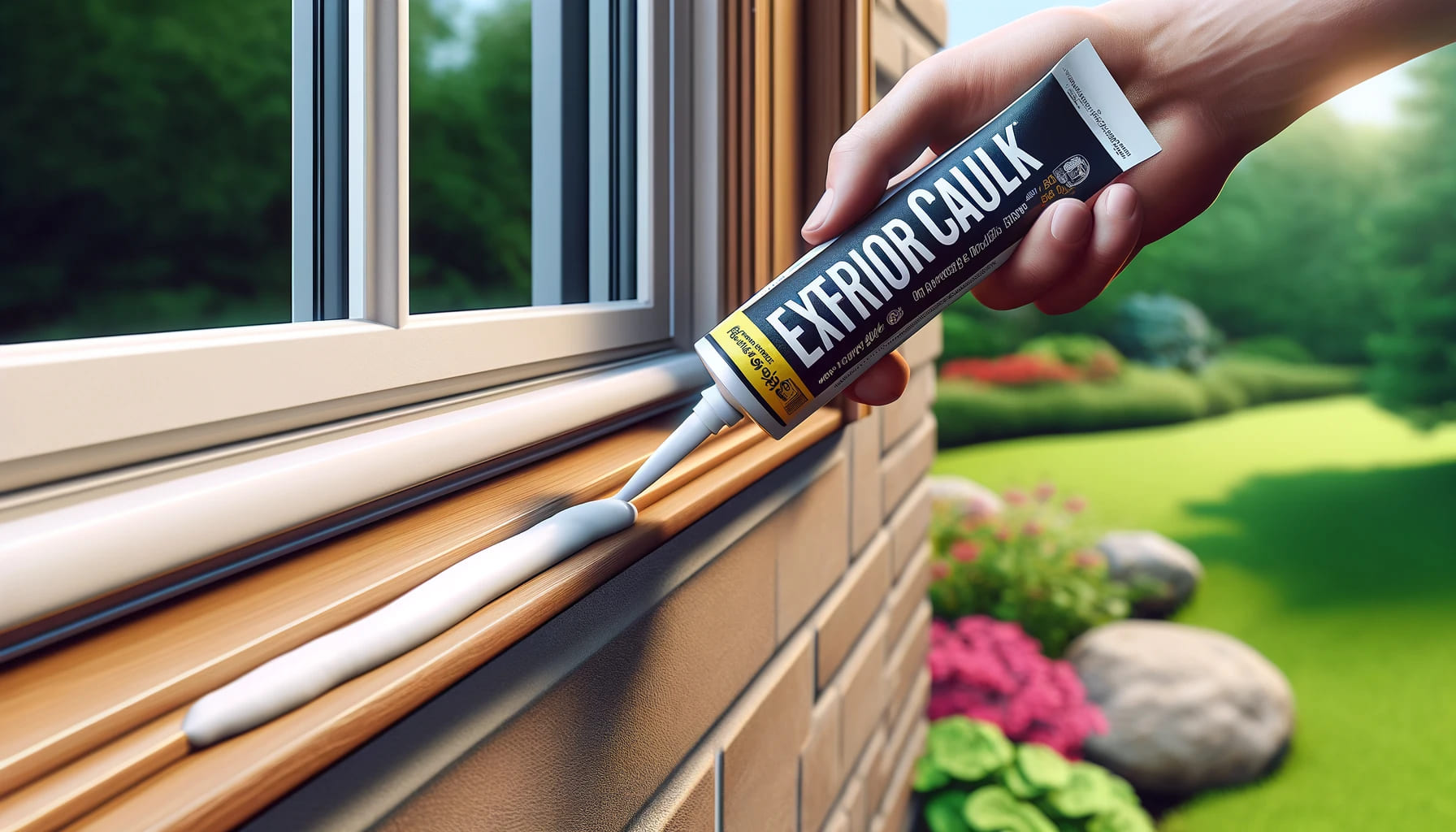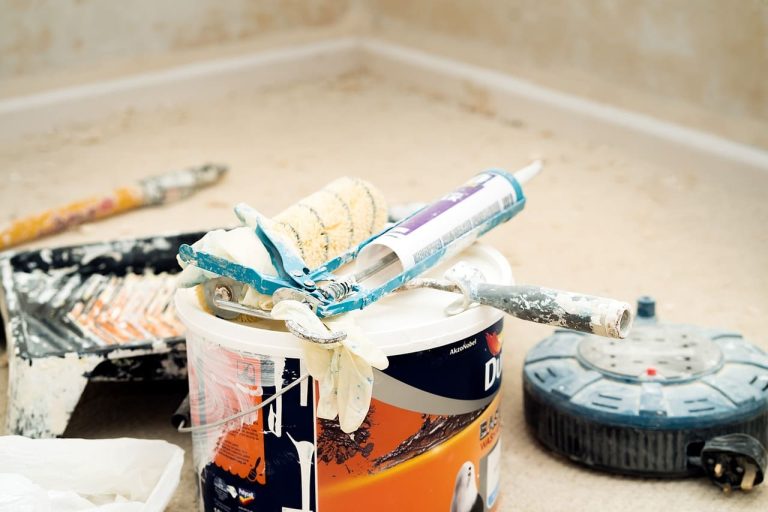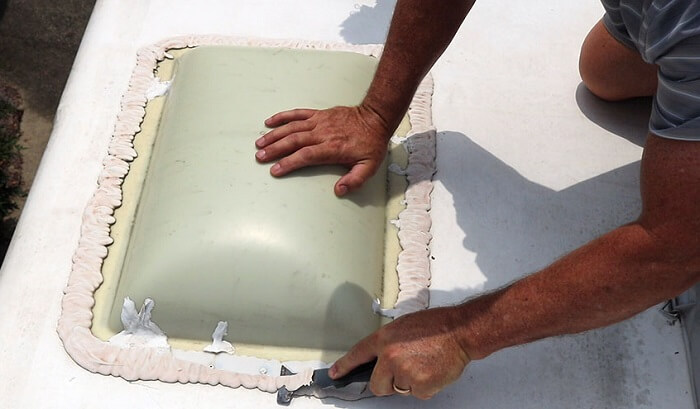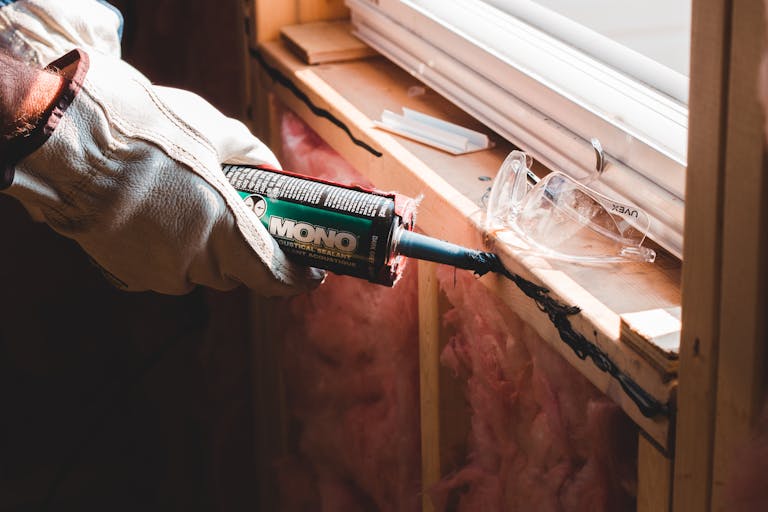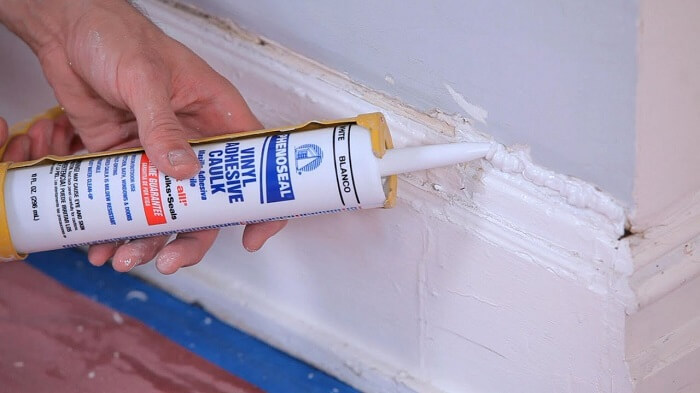What is The Best Exterior Caulk for Your Sealing Needs
With so many variants available, it’s difficult to ascertain the best exterior caulk for your sealing needs — but it’s also not impossible. I’ve tried and tested countless caulks over many months, and I’ve seen which ones work well and why they outshine their competition.
So if you’re looking for an exterior caulk that can cover all the cracks and gaps around your property, check out my detailed guide below.
Best Exterior Caulk Reviews
#1 – Editor’s Pick – GE GE012A All Purpose Silicone 1 Sealant Caulk
My top choice is silicone-based exterior caulk, which says a lot about the advantages of this material. Similar to other top-performing caulks, it has 100% silicone, which means that it doesn’t have trouble filling cracks and gaps no matter their shape and strength — making it useful for most caulking needs.
If the exterior of your house has holes and cracks resulting from shoddy construction, you should try sealing them with this. The GE GE012A is completely waterproof, and you only need to wait 12 hours before it can withstand rain. This is fast, even compared to my second pick, the Gorilla 8090001.
And while other exterior caulking products simply state they’re resistant to fungal growth, this model explicitly states that its mold and mildew protection lasts for seven years. This allows homeowners to prepare for a replacement early on. I used it for all my trims and sidings, and it hasn’t failed me once.
PROS
- Great combination of affordability, durability, and performance
- Translucence significantly reduces its noticeability for a clean finish
- Leaves not even a hit of a bad scent once it’s fully dry
- Includes a lifetime guarantee for added customer satisfaction
- Has well-written instructions for puncturing and cleaning
CONS
- Not ideal for first-time caulk users unless they’re okay with using a caulking gun
- Should have tougher packaging to reduce chances of crimples during delivery
#2 – Runner Up – Cosco 11880PBL1E Three-Step Platform
My second favorite exterior caulk is the Gorilla 8090001 100% Silicone Sealant Caulk. It’s advertised for both indoor and outdoor use, but I can testify that it does excel in the latter. For one, the Gorilla 8090001 has a translucent look, which doesn’t ruin the look of my ledges and corners no matter their colors.
Second, this exterior caulk works quickly, so you don’t have to wait for hours to touch it. In as little as 30 minutes, I observed that the caulking was completely dry — and it only took a day to ensure it’s become entirely waterproof. Plus, I only needed to apply a bit of pressure to remove the seal.
Moreover, you can use it to seal uneven gaps. The weather can still affect its long-term performance, but I’ve noticed that rain doesn’t ruin the seal. It also helps that it’s highly resistant to mold and mildew, two common forms of fungi that can mess up the look of your house and cause health problems.
Lastly, this is my second top pick because it does its job without any hiccups. Once you apply the caulk, you don’t have to check it again if it expands or contracts — it will only occupy the space you intended. Plus, users don’t need to buy a caulk gun. Just squeeze the right amount and put the cap back on.
PROS
- Its ergonomic design makes it easy to grip and squeeze to release the right amount
- Completely safeguards edges and corners from water if you apply it properly
- Prevents growth of mold and mildew to keep your exteriors in top condition
- Dries very quickly and doesn’t change shape once applied
- It’s a food-safe sealant so you can use it on the edges and gaps right outside your kitchen
CONS
- Initial smell right after application may bother some users
- Applicator cap could be improved for efficient and clean reuse
#3 – Dap 18110 Acrylic Latex Caulk With Silicone
If you want the best bang for your buck, I recommend the Dap 18110. It costs a mere $3.47, which is one to three dollars cheaper than my first two picks — and that’s for the slate gray 18110 model. You can pick others like almond, black, cedar tan, dark bronze, and clear. The white is even cheaper at $3.14.
Thus, this Dap exterior caulk offers superb aesthetic variety despite its low cost. Instead of a full-silicone caulk, it’s primarily composed of acrylic latex with some silicone. So while it’s not as good in the long run as pure silicone caulks, it’s got enough of the material to extend its lifespan than average acrylic caulks.
PROS
- Color is accurate as advertised once the caulking fully dries
- You can paint it after just 30 minutes for a seamless visual look
- Initial odor isn’t bad enough to warrant the use of a gas mask
- Easy to clean due to its largely acrylic composition
CONS
- May contract or expand a bit after just a few months
- Waterproofing needs improvement
- Relatively runny so it’s harder to control the amount released
#4 – Sashco Big Stretch 10006 Acrylic Latex Caulking Sealant
If you’re willing to pay nearly $14 for exterior caulking, you should try the Sashco Big Stretch 10006. As its name implies, this caulk can stretch up to five times its initial size. Thanks to this level of elasticity, it won’t crumble even if your house experiences constant rain, strong winds, and even minor earthquakes.
The Sashco Big Stretch 10006 further improves upon its performance against natural elements by having high freeze resistance. This means you can store it in the garage on its own day or night. And like the Dap 18110, you can paint over it to ensure it still fits your exterior’s visual appearance.
PROS
- Significant elasticity allows it to cover cracks with tiny applications
- Ideal choice for caulking exterior wall baseboards
- Caulking results are excellent if you apply it carefully
- It even works for sealing cracks in asphalt driveways
- You can use oil-based paint or stain without issues
CONS
- May be difficult to clean up especially in hot temperatures
- Caulk might leak out of the caulk gun when the tube is nearly empty
#5 – GE GE5010 Advanced Silicone 2 Window & Door Sealant Caulk
Granted, my budget pick has way more color options. But if you’re willing to pay more, then I suggest the GE Advanced Silicone Sealant Caulk, which comes in white, light gray, clear, brown, black, and almond. It has features I liked from my top pick including mold and mildew protection, and quick waterproofing.
This is specifically made for windows and doors, which limits its application compared to the all-purpose GE sealant caulk. Still, it should also work on trims and sidings. And if you use it in the right exteriors, you can expect to have it last for a decade.
PROS
- Flows evenly during application
- Works great for caulking polycarbonate roofing
- Takes just 30 minutes to withstand rain
- Stain-proof construction for worry-free exterior applications
CONS
- Caulk may leak around the caulk gun base
- Some color options may not be the exact shade you’re looking for
Best Exterior Caulk – Buyers’ Guide
What is an external caulk?
An external caulk, as its name implies, is a caulk specifically designed for outdoor application. Likewise, a caulk’s primary purpose is to seal any gaps or cracks. Proper caulking effectively prevents air, moisture, or pests, among other things, from infiltrating your house — preventing costly, risky structural damages.
Keeping moisture away from tiny holes and areas ensures that excess moisture can’t enter and weaken the materials. Plus, caulking not only stops damages but also helps you save money on your electricity bills. If your house has adequate caulking, then it will have an easier time staving off cold or warm air.
You need to know which caulk you need because products vary from one to another. Apart from being divided between external and internal applications, caulks also work differently for different surfaces. Some caulks can withstand extreme temperatures while others work better at moisture resistance.
Lastly, caulks can come in tubes or cartridges. The former is suitable for minor applications, and you just have to squeeze out the caulk. On the other hand, cartridges usually contain more caulk. You use it with a caulk gun to better control the amount released at a given time.
Here’s a brief discussion on external caulking:
Is it safe to use an exterior caulk?
Safety is a valid concern for a product that can quickly create a solid barrier against moisture. This is not something you want to get in your eyes or even under your nails. Still, caulking products today no longer have the same degree of toxicity as the first iterations, which used polychlorinated biphenyls (PCBs).
PCBs are highly persistent synthetic chemicals: It can take up to 83 days and 210 days for 50 percent of the PCBs to transform in the atmosphere and water, respectively. Moreover, PCBs are dangerous to both humans and animals. Thankfully, the United States stopped PCB production in 1979.
Modern health risks
Even if exterior caulks today no longer have PCBs, they still pose health dangers, though to a much lesser degree. According to the National Capital Poison Center, the majority of calls they get regarding caulking involve children or animals, or people who have problems with the caulk’s smell.
Occasionally, the problem occurs when the user touches the caulk when it hasn’t completely dried yet. In some cases, the caulk either gets inside the mouth or comes in contact with the eyes. If the caulk has dried, then it can become a choking hazard if it’s big enough, or if the swallower was a kid.
But for the most part, caulks are just mild irritants. Even if you breathe in the fumes or get some of the caulk inside you, the health risks aren’t extreme. Just refrain your kids and pets from approaching when you’re using a caulk. Also, read the user manual, wash your hands, and check for adequate ventilation.
Where should I use an exterior caulk?
Just because caulk is designed for exterior application doesn’t mean it should be used to fill every gap and crack. You shouldn’t cover any window weep holes. Otherwise, your windows can’t release water and prevent rotting. Also, avoid sealing wood garage door panels — they need gaps for movement.
So where should you use exterior caulks? For one, look for the so-called caulking corners. These are the corners and edges where moisture can seep in. Moreover, any holes or tiny cracks on your wall cladding need immediate caulking, but you must wipe the excess amount before it dries.
Lastly, check your trim boards. Caulk all joints to stop moisture from entering. Plus, caulking gives joints a visual enhancement if you do it right. And while you shouldn’t caulk the garage door panels, it’s perfectly fine to apply the product on the trim to keep not only moisture but even termites from entering.
What are the types of exterior caulk?
Manufacturers utilize a variety of materials to produce quality exterior caulks. Of course, the product you need depends on the surface, especially if you’re going to bond two different materials. Also, remember not to buy acrylic latex caulks — those are only good for interior caulking applications.
Similarly, don’t use oil-based caulks. A much better option is ethylene copolymer since it works on most surfaces, and you can paint on it. Likewise, exterior caulks made of synthetic rubber or silicone are both flexible. However, silicone caulks cannot be painted on and don’t go well with masonry or wet surfaces.
Another type of caulk uses polyurethane, which makes it last for as long as 30 years. While it’s hard to clean up, you can paint on it — and it’s widely regarded as an all-purpose caulking product. And aside from these, you’ll find more specific types, some of which combine two or more general types.
Conclusion
All in all, my top recommendation for the best exterior caulk is the GE GE012A All Purpose Silicone 1 Sealant Caulk. As its name implies, this is a caulk with a wide variety of applications. It’s made of full silicone, which makes it far better than acrylic options if you’re looking for long-lasting sealing.
Sure, the GE GE5010 Advanced Silicone 2 has better weather and fungal growth resistance. But that’s greatly limited in applications compared to the GE GE012A. The all-purpose silicone caulk performs in top shape regardless of the gap or hole — it fills them with sheer ease for high-grade waterproofing.
With a lifetime guarantee, proven durability, a clean-looking translucent finish, solid pricing, and sheer applicability, the GE GE012A All Purpose Silicone 1 Sealant Caulk is a worthy pick for exterior caulking needs.

